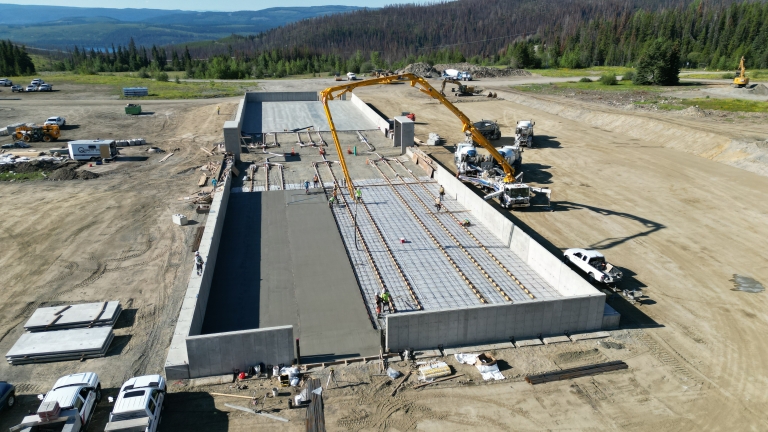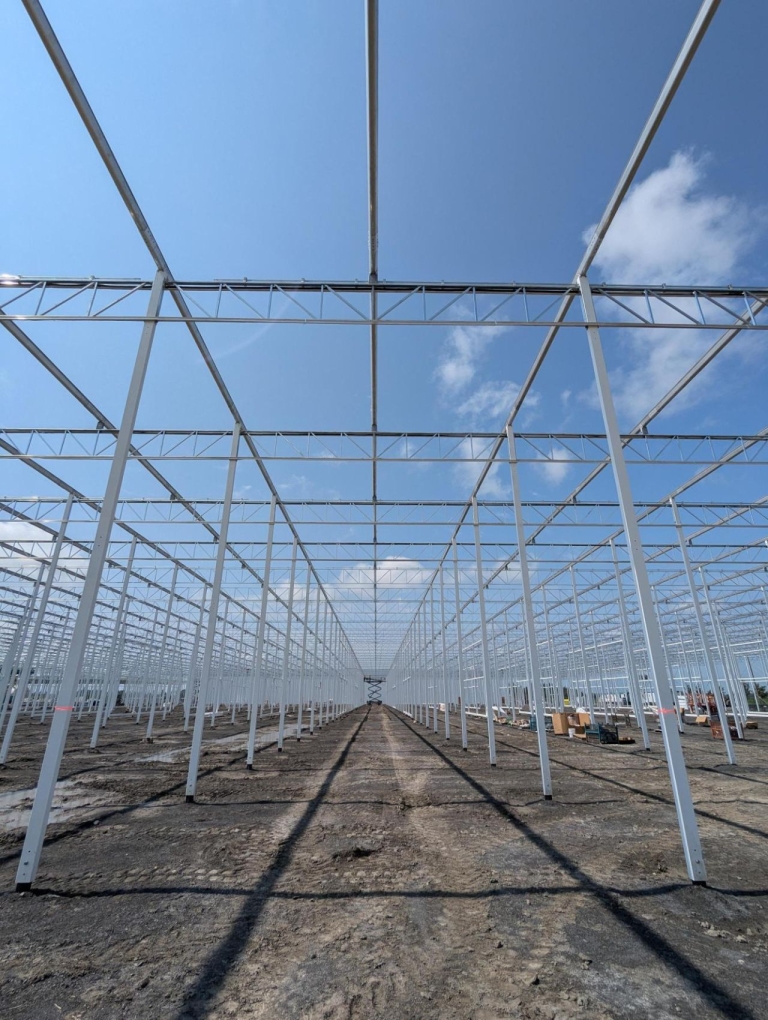In an age where sustainable farming and local produce are gaining traction, the introduction of High Tunnel Systems represents a significant leap forward. Made available with financial assistance through the Environmental Quality Incentives Program (EQIP), these systems are more than just another farming practice; they’re a revolution.
What Are High Tunnel Systems?
At its core, a High Tunnel System is a protective structure that shields crops from the external environment. Imagine a greenhouse, but one designed primarily for enhancing growth conditions rather than controlling them entirely. Its primary advantage is its ability to extend the growing season, enabling farmers to plant earlier in the spring and harvest later into the fall. In some environments, year-round cultivation becomes feasible, a game-changer for local produce markets.
What are the benefits of high tunnels?
High tunnels provide numerous benefits for growers, including extended growing seasons by protecting crops from frost, wind, and excessive rainfall. They improve crop quality, reduce the need for chemical inputs by controlling pests naturally, and enhance soil health by offering a controlled environment. Additionally, high tunnel systems can increase yield by creating optimal growing conditions and protecting against extreme weather.
Benefits Beyond Extended Seasons
While the most apparent advantage of the High Tunnel System is its ability to prolong the growing season, its benefits extend much further:
Improved Plant and Soil Quality
The controlled environment means less exposure to direct rainfall, pests, and diseases. This leads to healthier crops and, by extension, a richer soil profile as organic matter from these plants enrich the ground.
Eco-Friendly Practices
High tunnels contribute to a reduction in nutrient and pesticide transportation. Since plants are shielded from most environmental contaminants, the need for chemicals reduces, making the produce healthier and reducing the farm’s ecological footprint.
Energy and Transportation Savings
With the ability to grow crops locally, even in off-seasons, the need to import produce diminishes. This leads to a significant reduction in transportation costs and associated carbon emissions, making it a win-win for both the consumer and the environment.
High Tunnels and Irrigation
Water is the lifeblood of any farm, and in a High Tunnel System, its management is of paramount importance. With the absence of direct rainfall inside the tunnels, farmers often resort to drip irrigation. This method, which involves dripping water directly to the plant roots, is incredibly efficient and minimizes water waste. Furthermore, with precise control over water delivery, nutrient delivery to the plants can also be optimized.
The Role of Soil Health Practices
A High Tunnel System’s success doesn’t rest solely on the structure itself but also on the practices adopted within. Integrating soil health practices, such as cover crops and crop rotations, can have multiple benefits:
- Erosion Prevention: The roots of cover crops hold the soil together, preventing it from being washed away during heavy rains.
- Weed Suppression: Cover crops can outcompete common weeds, reducing the need for chemical herbicides.
- Enhanced Soil Water Content: Organic matter from the crops increases the soil’s water retention capacity.
- Pest Control: Crop rotation disrupts the life cycles of many pests, reducing their numbers without the need for chemical pesticides.
Community and Sustainability
Perhaps the most heartening aspect of High Tunnel Systems is their role in community building. By providing fresh, local produce throughout the year, these structures bridge the gap between farmers and consumers. When you purchase from a local farmer using a high tunnel, you’re not just buying food – you’re investing in your community, the environment, and a sustainable future.
Mastering Greenhouse Production: An Exclusive Masterclass
We’re excited to partner with the esteemed Market Gardener Institute to present our exclusive masterclass, “Mastering Greenhouse Production.” Tailored for both novices and experts in greenhouse farming, this course delves into advanced techniques, best practices, and the latest trends. Guided by industry leaders, participants will be equipped to maximize their High Tunnel Systems and other greenhouse ventures. Don’t miss this golden opportunity to elevate your farming approach with insights from the best in the business.
Partnering with a Recognized High Tunnel Manufacturer
For those looking to incorporate a High Tunnel System into their agricultural endeavors, it’s crucial to choose a trusted partner. We’re honored to have been approved by the USDA’s Natural Resources Conservation Service (NRCS) as an official high tunnel manufacturer. This recognition is a testament to our commitment to quality and sustainability. While the NRCS offers both technical and financial assistance to farmers, partnering with an approved manufacturer like us ensures a smoother transition from your initial vision to the final implementation. Our expertise aligns seamlessly with the rigorous application process of the NRCS, which prioritizes a clear conservation plan, a thorough assessment of resources, practice design, and continuous monitoring. Together, we strive to promote sustainable farming and make high tunnel integration a beneficial experience for all.
FAQ on the High Tunnel Initiative
1. What is a High Tunnel System?
A High Tunnel System is a structure that allows farmers to extend the growing season, improve plant and soil quality, and benefit from several other advantages. They have been gaining popularity among farmers.
2. What are the benefits of High Tunnel Systems?
High tunnels offer a variety of benefits, including:
- Extending the growing season.
- Enhancing plant and soil quality.
- Reducing the transportation of nutrients and pesticides.
- Improving air quality by decreasing transportation inputs.
- Providing consumers with a local source of fresh produce, thus cutting down on energy use.
3. How do high tunnels affect the growing season?
High tunnels shield plants from harsh weather, enabling farmers to begin planting earlier in the spring and continue growing later into the fall. In some cases, they can even support year-round cultivation.
4. How does irrigation work with high tunnels?
Since high tunnels prevent direct rainfall from reaching plants, farmers often use tools like drip irrigation. This allows for efficient delivery of water and nutrients directly to the plants.
5. Can high tunnels help with pest control?
Absolutely! High tunnels give farmers better control over pests and can protect plants from both pollen and pesticide drift.
6. Are there any soil health practices for high tunnels?
Yes, practices such as cover crops, crop rotations, and more can be employed. These practices not only benefit the soil but also prevent erosion, suppress weeds, enhance soil water content, and disrupt pest cycles.
7. What are the supporting practices associated with high tunnel systems?
Farmers might need additional conservation practices when implementing high tunnels. Some of these practices include Critical Area Planting, Diversion Grassed Waterway, Mulching, Micro-irrigation, Subsurface Drain, and more.
8. How can I start with a high tunnel system?
If you’re interested, you can apply through the Environmental Quality Incentives Program (EQIP). Check out the “Apply for EQIP” section for more information.
9. What assistance does the Natural Resources Conservation Service (NRCS) offer?
NRCS provides both technical and financial assistance to help farmers, ranchers, and forest landowners. They offer free technical advice, resource assessments, practice design, and resource monitoring.
10. What is the application process with NRCS?
The application process involves:
- Filling out an AD 1026 form.
- Meeting other eligibility certifications.
- Completing the CPA 1200 application.
- Providing necessary identification and property documents. Applications are typically accepted continuously but are considered for funding during specific ranking periods.
11. How are applications ranked?
Applications are evaluated based on local resource concerns, the expected conservation benefits, and the needs of the applicants.
12. What happens after my application is selected?
If your application is chosen, you can decide to sign the contract. Once signed, you’ll receive standards and specifications for completing the practices. After implementation and inspection, if the work meets NRCS standards, you’ll be compensated accordingly.
13. How much does it cost to build a high tunnel?
The cost of building a high tunnel depends on its size, materials, and design. Typically, a standard high tunnel ranges from $2,000 to $10,000, with larger or more customized structures costing more. For growers participating in NRCS programs, there may be cost-share assistance available, reducing the upfront investment.
14. What is the difference between a hoop house and a high tunnel?
A hoop house and a high tunnel are similar in structure but differ in use and purpose. Both use a metal frame and plastic covering, but a hoop house is often used for season extension and is typically smaller and more temporary. High tunnels, on the other hand, are more robust structures designed for long-term growing, providing better control over temperature and ventilation, often featuring roll-up sides for airflow.
15. What is the lifespan of the NRCS high tunnel?
The lifespan of an NRCS high tunnel typically ranges from 5 to 10 years, depending on the quality of materials used, maintenance, and environmental factors. The frame usually lasts much longer, while the plastic covering may need to be replaced every 4 to 6 years, depending on exposure to the elements. Proper care and regular maintenance can help extend the life of the structure.
16. Where can I learn more about this initiative and the application process?
For more details, you can visit www.nrcs.usda.gov/GetStarted.


